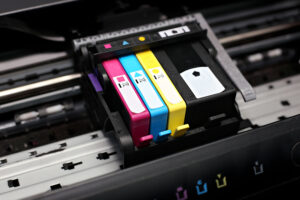Has your printer run out of ink? A new cartridge may cost as much as the machine itself.
Many consumers now opt for cheaper alternatives — remanufactured and compatible cartridges. Are they making the right choice?
Concerns seem well-grounded. After all, printer brands advise customers against using third-party replacements. They claim high prices for their supplies are a consequence of expensive R&D. Companies like HP, Brother and Epson spend billions to design new printers. At the same time, a replacement hp 953xl multipack from a Smart Ink cartridge shop costs 50% less than the original product. Is there a catch?
Razor and Blades
Many consumers believe that big brands are just using the razor and blades business model. It involves selling a cheap product (even below its breakeven point) and capitalizing on expensive supplies. HP may sell you a printer for GBP100, but a cartridge may cost GBP90 or more. For companies, this is a way to recoup losses from printer sales. This sounds logical, but buyers still feel they are being manipulated.
Quality Comparison
Original cartridges ensure perfect compatibility and standard quality of printing. In comparison, the quality of refills and compatible models vary. In either case, you should do some research to identify a reliable provider in your area.
1. Remanufactured Cartridge
This term describes an original cartridge filled with new ink. The provider will empty, clean and refill the item. The quality of third-party ink is crucial. As it does not come from the printer manufacturer, minor deviations in quality are normal. For example, the colours may look slightly different.
Substandard ink may cause smudges, problems with printheads, and other issues. At the same time, you may find an excellent replacement. Overall, remanufacturing is an option unless you are planning to print professional photos. For standard office needs, refilling may suffice provided that the company gives a warranty.
2. Compatible Cartridges
These cartridges are entirely original, but they are produced by other brands. Legally, the products are acceptable as their design deviates from the originals. The quality may be excellent, which is why printer brands have tried so hard to outlaw these replacements. Fortunately for penny pinchers, their endeavors have failed.
When choosing a cartridge, check the reputation of its producer. Examine customer feedback to see how the product performs. Generally, this is the most convenient option — you can make substantial savings without taking your old equipment anywhere.
The best products have certified quality (CE, ISO 9001, ISO 14000, Reach, STMC), a high page yield, and a large volume. Providers also offer extensive warranties. And if you worry about the carbon footprint, note that they are also sustainable.
To Sum Up
When you run out of printer ink, buying a new original cartridge is the most expensive option. Two cheaper alternatives — remanufactured and compatible cartridges — cost less while providing comparable quality. The most important consideration is the background of the supplier, so do some homework to make an informed decision.
Read more:
How to Replace Printer Cartridges More Affordably
